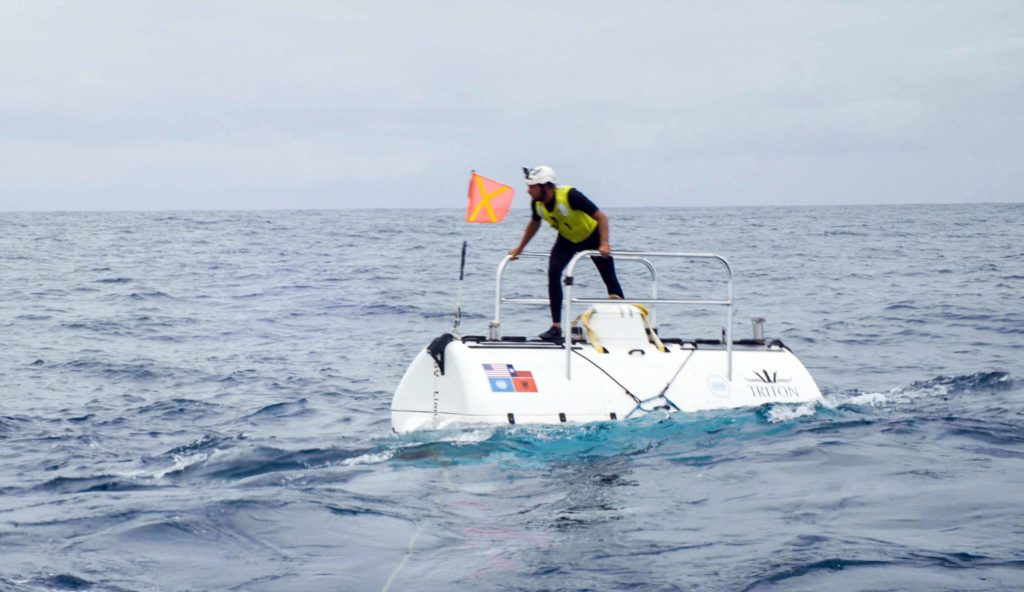Victor Vescovo, the planet’s most travelled deep-sea explorer, has completed the first-ever crewed submersible dive to the 8km-plus deepest point of the Atacama Trench off South America.
Vescovo, the founder of Caladan Oceanic, was accompanied on the descent aboard Limiting Factor by Dr Osvaldo Ulloa, director of the Instituto Milenio de Oceanografia (IMO). Their 8069m dive to what is the south-eastern Pacific’s deepest trench was the first in the Chilean leg of their Ring of Fire Pt 2 (2022) expedition.
The aim of the mission is to conduct bathymetric seabed mapping and collect samples at various depths. The IMO will use the data to help determine the best places to install sensors for its Integrated Deep Ocean Observing System (IDOOS) project.
This will be the first observation system to be anchored in the deep ocean along Chile’s long coast, combining geophysics with oceanography to eventually establish an early-warning system for earthquakes and tsunamis.
The expedition is based on the support vessel Pressure Drop iand led by EYOS Expeditions with technical partners Triton Submarines and Greenroom Robotics.
Vescovo completed a further dive on 23 January with Dr Ruben Escribano of Chile along the eastern slope of the Richards Deep, at 7727m the second-deepest location in the Atacama Trench.
Other planned dives will include what is hoped to be the first crewed descent of the Mid-American Trench off western Mexico. This follows the same deep-ocean fault-lines as the Atacama Trench off Chile and Peru.
‘Amazing evidence’
“Being able to glide along the seafloor for three hours, personally investigating points with someone who has studied the area for much of their career, was just fantastic,” said Vescovo of his dive with Dr Ulloa. “Together we witnessed some amazing evidence of what appears to be more examples of chemosynthesis in the world’s deep ocean trenches.
“Here, however, we saw long bacterial tendrils coming off rock faces that never see any sunlight, and obtain their energy from the minerals and gases seeping from the rocks, surrounded by a freezing seawater environment. Just extraordinary.”

Further Vescovo projects this year including warship search expeditions to the Midway and Samar oceanic battlefields; the first manned dives to the bottom of the Yap and Palau trenches; and a further scientific dive to the deepest point of the ocean, Challenger Deep – which Vescovo has already visited a record 12 times.
This will be followed by dives to the Manila, Ryukyu, Izu-Ogasawara, Japan and Kuril-Kamchatka trenches in co-operation with the Japan Agency for Marine Earth Science & Technology.
Deepest sidescan sonar
On these dives the team plan to test the world’s first sidescan sonar capable of operating at full ocean depth (11km), over swathes of seabed 1.5km wide.
Separately, they plan to continue mapping tens of thousands of square kilometres per month to support the General Bathymetric Chart of the Oceans 2030 initiative to map the entire seafloor by 2030.
With the completion of the Five Deeps Expedition in August 2019, former US Navy Commander Vescovo became the first person in history to have been to the top of all the world’s continents, to reach both poles, and to descend to the bottom of all its oceans. Find more on Caladan Oceanic expeditions here.
Other Victor Vescovo news stories on Divernet:

